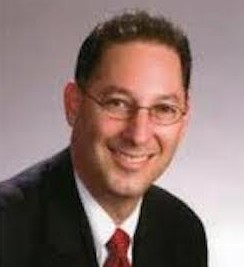The Wide Scope of Terrorism
Terrorism to the average Joe takes a racial and ethnic dimension. Technically, though this is a misrepresentation and terrorism is far more expansive. According to the U.S. Code, terrorism, regardless of its form refers to acts with intent to coerce or intimidate a civilian population. Going by this definition, most criminals operate as terrorists. The victims they terrorize may be as specific as one person or as widespread as an entire country. Terrorism takes different forms. A man guy battering his wife is a terrorist as the wife feels  desperate, trapped, threatened, and intimidated.
desperate, trapped, threatened, and intimidated.
In 2002, John Muhammad and Lee Boyd Malvo terrorized the population a large swath of the US stretching from Baltimore to Richmond. Their chose act of terrorism was random sniper takedown of complete civilian strangers. Their spate resulted in 10 fatalities and 3 people wounded. Residents cowered in fear based on the uncertainty of who was next on the makeshift hit list.
Walking Down Memory Lane
Therefore, there exists a deep-seated relationship between terrorism and the criminal personality. In fact, it appears that the criminal personality feeds off a vile desire to terrorize or inflict needless pain on others. The criminal personality may start its slow rise to maturity when it inspires an act of terror at an early stage. This was certainly the case with Adolf Hitler, as he manifested behavior and thinking patterns common to criminals. These observations chronicled by Robert G.L. Waite in his book, The Psychopathic God include brutality toward animals, “blind fury,” and general hatred toward the world. You can fill in the blanks of how Hitler turned out when the criminal personality had gone full circle.
Who versus What
While Adolf Hitler occupies an unenviable position on the list of individuals who have unleashed unimaginable terror, many other individuals, and organizations make the list: So much that the list is practically endless.
Paul Hill terrorized abortion clinics and murdered two men. The Ku Klux Klan organization terrorized blacks in the South. The enlightening reality it is not so much about WHAT a terrorist does as it is about WHO the terrorist is. Terrorists in the twenty-first century were not exemplary, productive members prior to when they were “radicalized.” This is how it appears in the media and public discourse.
However, it is inaccurate. These terrorists were most likely criminals who embraced causes they associated with and channeled their wanton desire for power, excitement, and conquest through the causes to carry out acts of terror. The adjectives used to describe Tamerlan Tsarnaev, best known as the Boston Marathon bomber, left much to be desired. The New York Times called him a social isolate, a college dropout, and a violent young man. He had links to drug dealing and a triple murder. He was clearly a criminal prior to his participation in the Boston attack.
Prior to being a wanted man implicated in masterminding suicide missions, executions, and bombings, Jihadist Abu Musab al-Zarqawi was a heavy drinker, bully, a willing participant in an armed robbery, and indulged in several other vices. The cause to which he claimed allegiance to was a cover for his own distressing indulgence to slaughter and cause havoc. He met his timely demise on June 7, 2006 at the hands of the U.S. forces.
Like al-Zarqawi, terrorists seek for causes to serve as a banner under which they employ extreme tactics. Sometimes, these causes may be worthwhile. For example, animal rights, political movements, historic preservation, or environmental protection. If brought to book, they use these causes to justify their criminal behavior. It is for this reason that terrorist groups have precise locations where they locate recruits. Prison offers a ready, steady pool of potential recruits. Next on the list are neighborhoods where unemployed drifters who often have had encounters may offer little or no resistance to persuasion. The terrorists involved in the Paris terrorist attacks were burglars, thieves, and perpetrators of other types of crime. Now, while their targeting may suggest that deplorable social conditions breed terrorism. This is not the real deal, the vast majority of people in unstable, impoverished areas are not criminals, nor do they kill anyone. The debauched elements are often a small percentage of the entire population.
Therefore, the critical factor for indulging in terrorism is the criminal personality of the individual, rather than the environment. Furthermore, when addressing terrorism, it is requisite to ascertain WHO the terrorist was prior to him or her embracing the “cause.”

